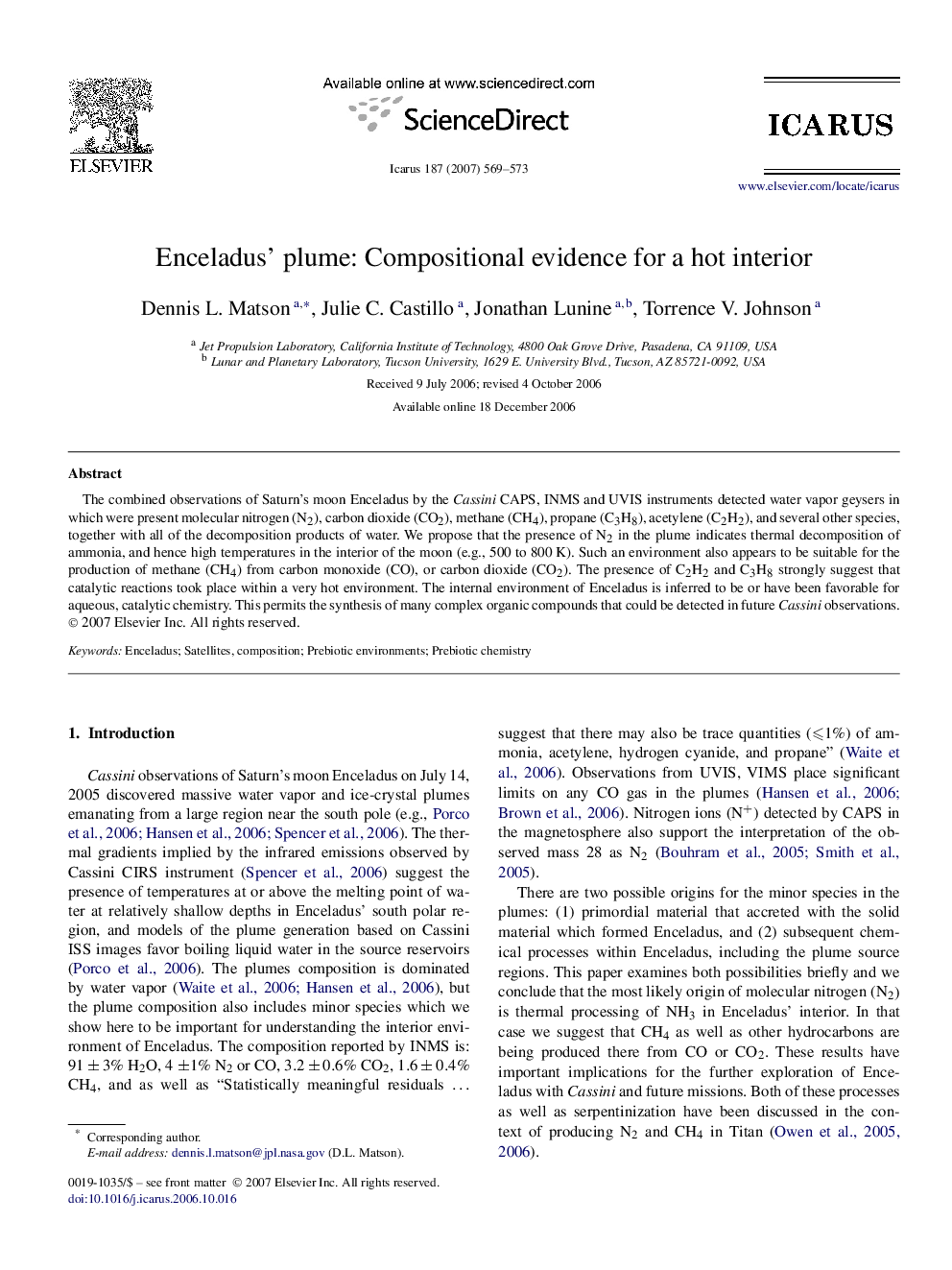| Article ID | Journal | Published Year | Pages | File Type |
|---|---|---|---|---|
| 1775429 | Icarus | 2007 | 5 Pages |
The combined observations of Saturn's moon Enceladus by the Cassini CAPS, INMS and UVIS instruments detected water vapor geysers in which were present molecular nitrogen (N2), carbon dioxide (CO2), methane (CH4), propane (C3H8), acetylene (C2H2), and several other species, together with all of the decomposition products of water. We propose that the presence of N2 in the plume indicates thermal decomposition of ammonia, and hence high temperatures in the interior of the moon (e.g., 500 to 800 K). Such an environment also appears to be suitable for the production of methane (CH4) from carbon monoxide (CO), or carbon dioxide (CO2). The presence of C2H2 and C3H8 strongly suggest that catalytic reactions took place within a very hot environment. The internal environment of Enceladus is inferred to be or have been favorable for aqueous, catalytic chemistry. This permits the synthesis of many complex organic compounds that could be detected in future Cassini observations.
